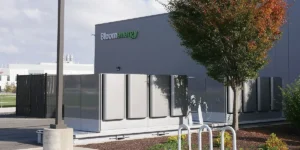Electrolysers already delivered for UAE’s first green hydrogen-based steel project

Emirati state-owned renewables developer Masdar and Abu Dhabi-based steel company Emirates Steel Arkan are in the midst of building a green steel pilot project due to start up next year, which will demonstrate the replacement of fossil gas currently used to produce direct-reduced iron (DRI) with renewable H2.
The first electrolysers for the project have already been delivered, although neither firm has disclosed the capacity or supplier. Details are also murky on whether these projects will be directly connected to new renewable energy generation.
Emirates Steel Arkan currently covers around 13% of its steel business’ direct and indirect energy use with clean energy certificates for solar and nuclear.
However, due to its use of natural gas-based DRI rather than coal-fired blast furnaces and use of CCS technology, Emirates Steel Arkan already claims a lower carbon intensity than the global industry and has targeted a further 40% reduction in emissions by 2030.
“As the first steel company in the [Middle East and North Africa] region, and among the pioneers worldwide to adopt green hydrogen for sustainable steel production, this project represents a major milestone in our commitment to realize our company’s sustainability objectives,” said Emirates Steel Arkan’s group CEO Saeed Ghumran Al Remeithi.
The UAE, set to host COP28 from next week amid controversy over its petrostate status, already targets a 25% global market share of clean hydrogen, with Masdar pledging to build 100GW of capacity by 2030.
But while much of the hype around hydrogen in the Middle East has focused on exports to demand centres in Europe and Asia, some voices such as think-tank IEEFA have suggested that directly using the H2 to displace fossil gas for DRI and exporting hot-briquetted iron instead would be more effective due to the relative high cost and inefficiency of transporting hydrogen.
The Emirati hydrogen strategy, approved by the government in July, not only targets 1.4 million tonnes of H2 production by 2031, but the establishment of two “oases”, or production hubs, in order to reduce emissions from heavy industry and transport by 25%.





